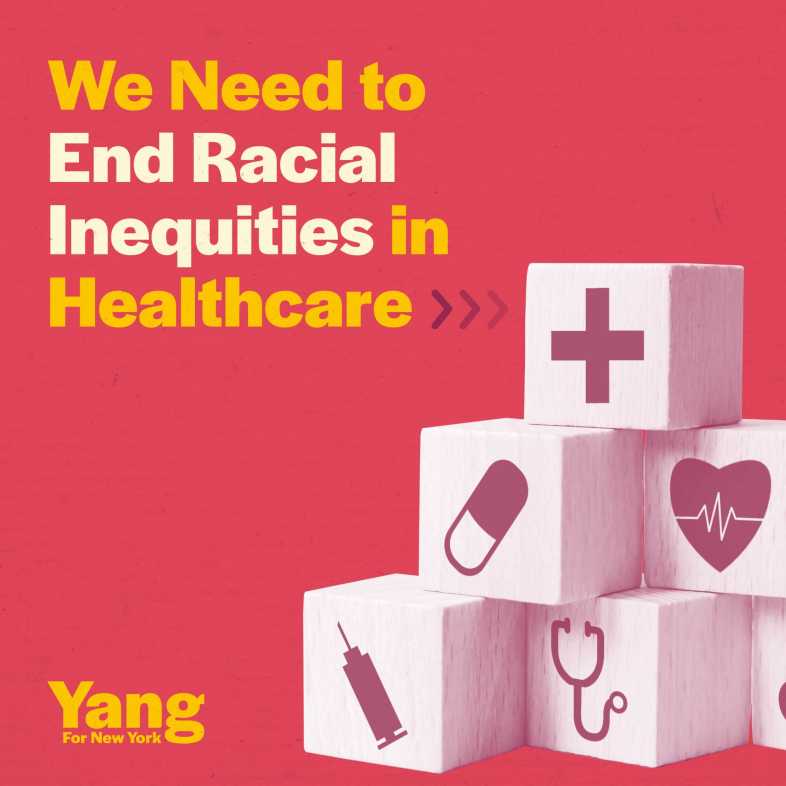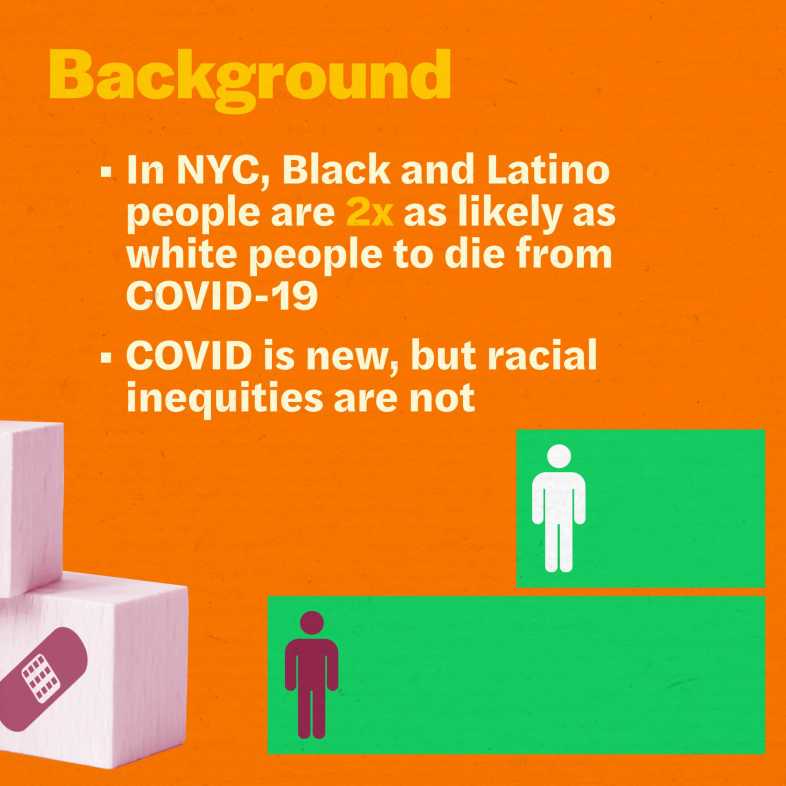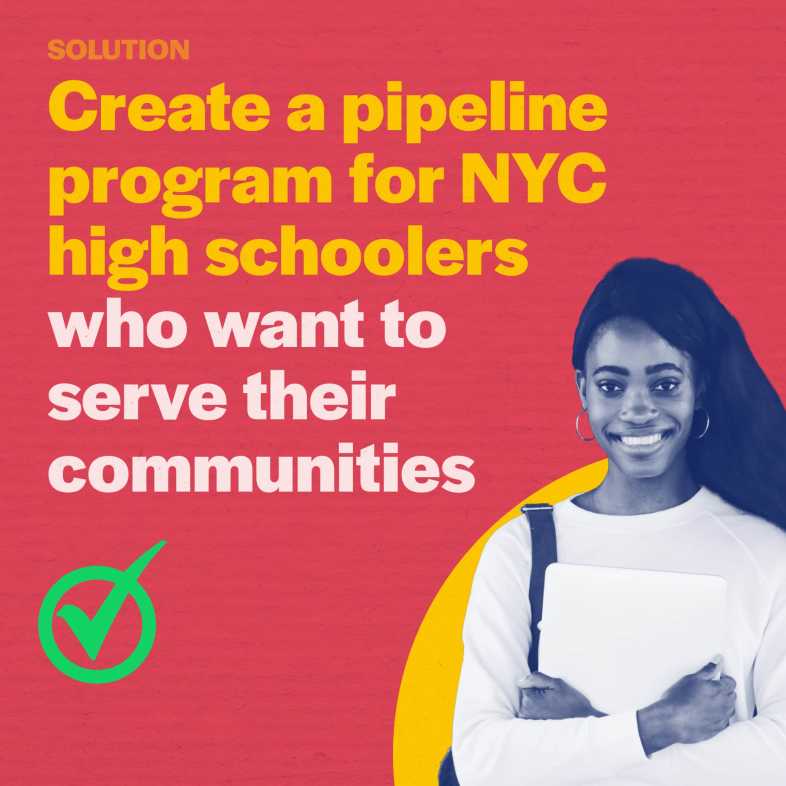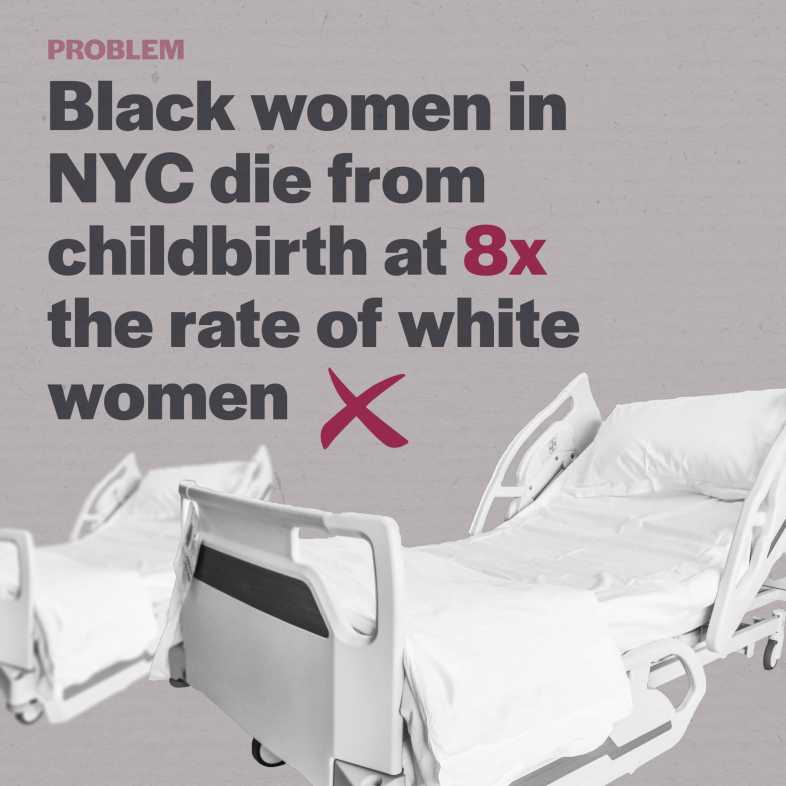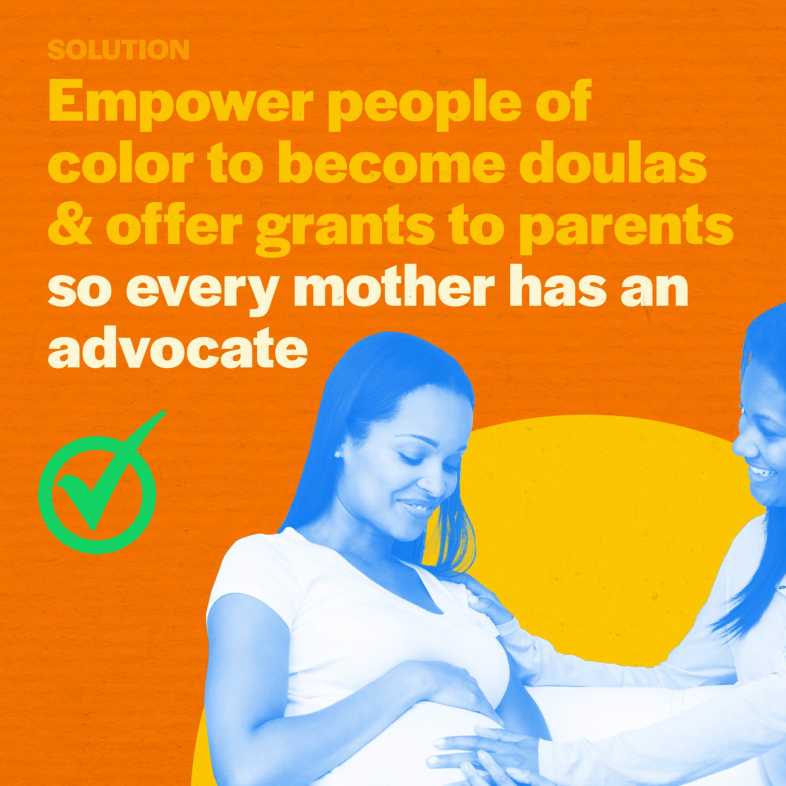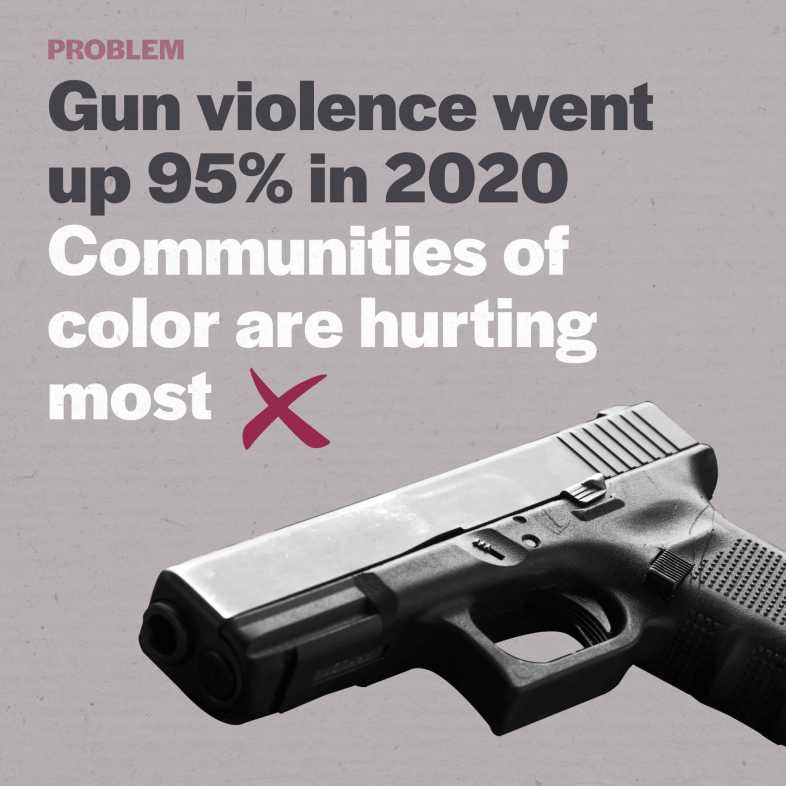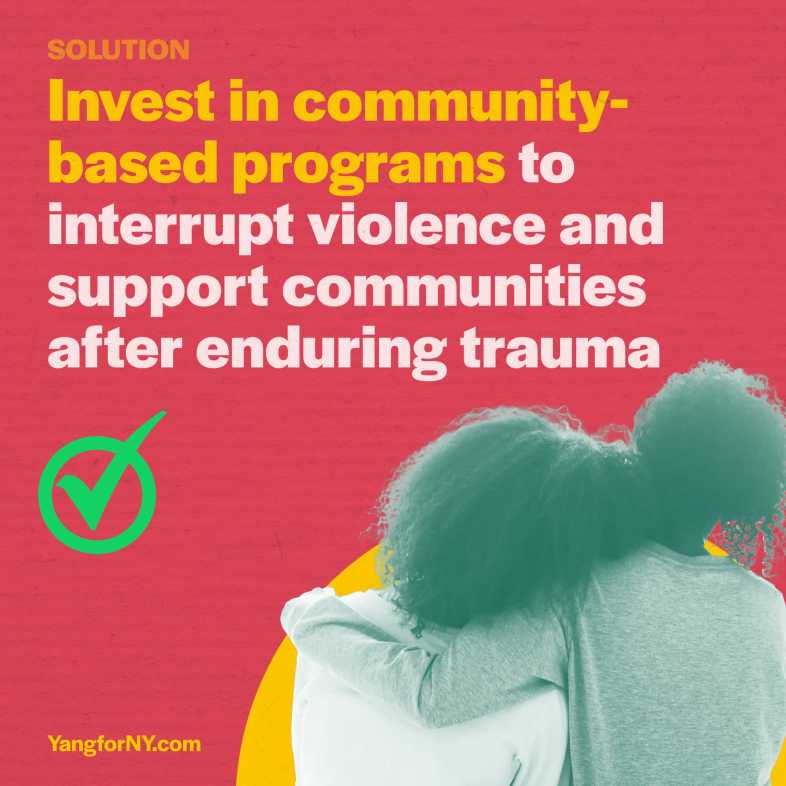Racial Equity ∙ COVID Recovery ∙ Public Health
Racial Equity in Healthcare Delivery
Well before COVID-19 hit, race-based health disparities in New York City were stark. Black women in New York are eight times more likely to die of pregnancy-related complications than white women, much higher than the national average. 22% of Black children and 15% of Latinx children in New York have asthma, compared to 4.2% among their white peers. For example, Mott Haven in the Bronx is known as "asthma alley". It is 97% Hispanic and Black and has an asthma hospitalization rate that is 21 times higher than other neighborhoods. These gross health disparities are the result of systemic injustices and the failure of our public health systems. On top of already-existing disparities in our City, the pandemic has taken a monstrous toll on communities of color in New York City, exposing the fragility of public health interventions to actually reduce disparities in health outcomes.
The reality is that solutions to end racial disparities in our healthcare system actually start outside the healthcare system itself. Ensuring all New Yorkers have safe housing, access to transit, healthy food in their neighborhoods, and are empowered with information to make decisions that are best for them and their families, is key to reducing racial inequities. At the same time, the system must also shift to meet critical needs. Our administration will build on the progress that New York City Health and Hospitals (H+H) and the New York City Department of Health and Mental Hygiene (DOHMH) have already made to center healthcare delivery around racial equity.
Amend the New York City Charter to Make Ending Racial Health Disparities the Mandate of DOHMH
A Yang administration will amend the New York City Charter to ensure that ending racial health disparities is among the primary mandates of DOHMH. The leaders that Yang appoints to DOHMH and other relevant city agencies will represent the diversity of New York City and will make ending racial health disparities a top priority.
Build a Diverse, Culturally Competent Public Health Workforce
There is abundant evidence that shows that when communities of color are served by providers who they identify with, outcomes are better. A Yang administration will create a pipeline program for prospective healthcare providers of color to serve communities of color across the five boroughs. With the City University of New York (CUNY) and Health and Hospitals (H+H), we will expand fast-track pipelines into healthcare careers for New York City high school graduates, particularly those of color, who are eager to serve diverse communities in New York City, if they commit to serve New Yorkers upon graduation.
Ensure Fair Staffing Ratios
We must guarantee that healthcare workers are not overburdened, particularly those who serve communities of color. With our partners in the labor movement, we will ensure that the City is a leader on safe staffing ratios across the healthcare system.
Expand Access to Healthcare at Trusted Providers
Now more than ever, safety net providers like Callen Lorde Community Health Clinic and Planned Parenthood of Greater New York that provide trusted services to New Yorkers in need could not be more essential as part of our City’s healthcare continuum. We will expand support for all safety net providers that specialize in healthcare services for LGBTQ+ folks, young people, people seeking reproductive healthcare and providers trusted by immigrant communities, and ensure that deceptive establishments that prey on women of color like “Crisis Pregnancy Centers” are put out of business once and for all.
Require Racial Equity Competency for All Healthcare Providers in New York City
Building on the tremendous work of the Center for Health Equity under former New York City DOHMH Commissioner Dr. Mary Bassett, a Yang administration will require racial equity competency as part of teaching and learning at all H+H hospitals, available to providers citywide in partnership with DOHMH, and a requirement for nonprofit organizations seeking City funding to deliver healthcare services.
Expand Neighborhood Action Centers
Over the last several years, DOHMH has taken a place-based approach to centering racial equity in healthcare delivery. Central to this shift has been the creation of Neighborhood Action Centers in Brownsville, East Harlem, and Tremont, neighborhood-based one-stop shops that bring together health care providers, New York City agencies, and community-based organizations and programs under one roof. In light of the pandemic, we must expand Neighborhood Action Centers to those communities across New York City that bore the brunt of the pandemic.
Focus on Improving Black Maternal Mortality and Morbidity by Expanding Doula Care
Doulas are critical in ensuring that all birthing parents, and especially Black birthing parents, can advocate for their needs during the birth process. The City has made important strides in centering this issue, but this work is far from complete. A Yang administration will expand New York State’s Doula Pilot Program by providing direct support to all parents who seek doula care with one-time grants to pay for this critical healthcare service, and with DOHMH, create a pipeline for more people of color to become birth workers and doulas. At the same time, we will continue to advocate for all private insurance and Medicaid to cover doula care for all patients.
Expand NYC Care
While we advocate for healthcare for all at the state and federal level, we must take steps in New York City to expand healthcare access using the tools at our disposal. In 2019, the City launched NYC Care, which allowed uninsured New Yorkers to visit one of H+H’s hospitals or clinics and see a primary care physician. Now expanded citywide, NYC Care is one step towards expanding access to primary and preventative healthcare. However, as a report by New York City’s Independent Budget Office (IBO) noted, NYC Care is limited in its ability to impact the most vulnerable parts of the City - namely those that have the highest rates of uninsured residents but are not near any public hospital facilities. We will expand NYC Care to New York City healthcare providers beyond H+H, and engage in an aggressive outreach campaign with advocacy organizations to connect people without healthcare insurance to this program.
Read our full Sanctuary City policy here.
Treat Gun Violence Like the Public Health Crisis it Is
Research and lived experience has increasingly framed gun violence as a public health crisis - a Yang administration would treat it as such. Communities of color have had to bear the brunt of the rise in gun violence since the pandemic, and our approach to solving gun violence must have a racial equity lens. Cure Violence and other gun violence intervention programs are among our most important tools to curb gun violence. The Cure Violence program recruits and supports trusted, credible community messengers to interrupt violence before it begins, and mediate conflict when it arises. A Yang administration will scale up Cure Violence so that every neighborhood with significant gun violence is covered.
When an incidence of gun violence occurs - be it between community members, at the hands of police, or in a domestic dispute - communities also need to be supported through the trauma that results. The Yang Administration will invest in coordinated responses by community based organizations, mental health providers and hospitals to violence and support restorative justice practitioners, following the innovative strategies of organizations like Common Justice.
